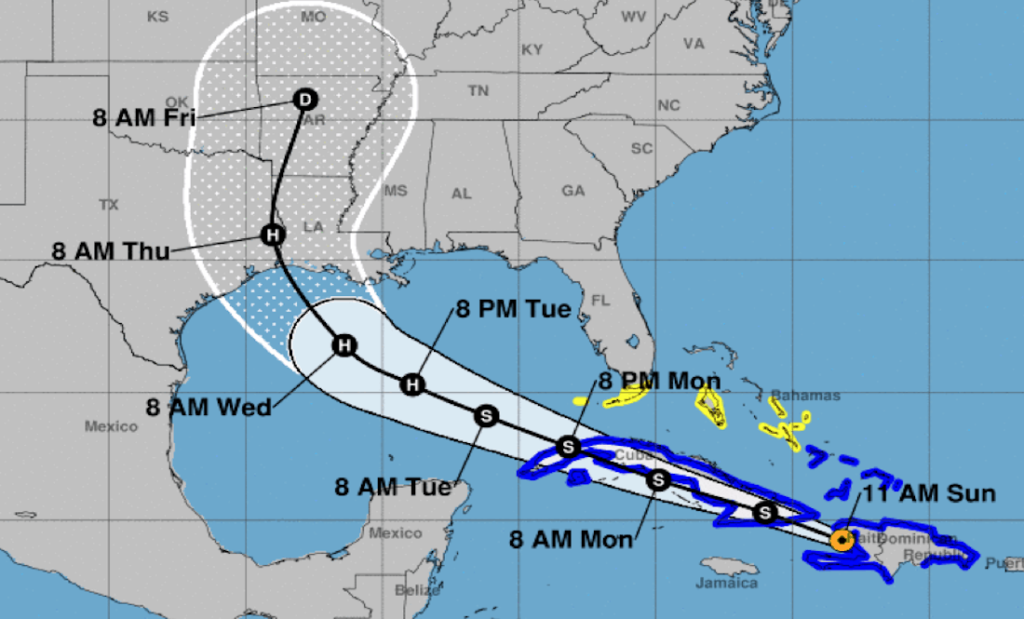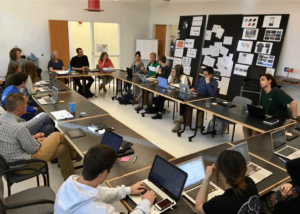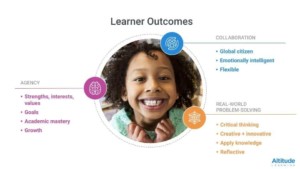Invention Opportunity: Creating a Shared Reality

The Internet was supposed to create a shared reality but social media reinforced information gullies that have widened into canyons of difference with competing facts interpreted through tribal logic models and resulting in distinctly different realities.
We can’t blame it all on Facebook and Twitter, big differences were there–and have become more painfully aware with the trifecta of a pandemic, racial injustice, and climate crisis all impacting the least advantaged in society–but it’s clear that rather than serving as a unifying force, social media has become a wedge that divides.
The fundamental problem is one of communication, “The problem of persuasion, the problem of getting people to agree on a shared consensus view of reality, and to acknowledge basic facts and to have their probability assessments of various outcomes to converge through honest conversation,” explained neuroscientist and author Sam Harris.
He acknowledges that “our failure to fuse cognitive horizons through conversation is reliably derailed by politics.” He adds religion as a second ideology that shapes individual views of reality.
Founding Olin College president Richard Miller sees truth as a discipline that can be learned, a constructive skepticism that results in opinions based on facts–not the number of followers. With all the disinformation out there, teaching critical consumption must start in elementary school.
Complexity confounds the problem. The interrelated problems we face don’t have simple solutions and their early data sets haven’t yielded conclusive answers. Nonetheless, it’s hard to make progress without starting with a common fact base and a shared sense of reality.
Shared reality is the necessary first step of leadership whether that’s a school, a company, or a country. Shared reality starts with the facts but because those are open to interpretation, the shared reality is most likely to emerge within the identity of membership– citizenship of a city or stakeholder of a school system. You’ve got to invite people into a system to have a shot at a shared reality.
Shared Reality as an Invention Opportunity
Access to quality learning for the (soon to be) 8 billion of us depends on inventing combinations of new tools and agreements that will expand access to powerful learning and lives of opportunity.
Our list of invention opportunities starts in an unlikely place–a shared set of facts and ways to interpret those shared facts that will enable communities (and countries) to move forward together. Creating a shared reality–a common situational awareness that enables collective action–requires shared facts, shared values, and shared models.
1. Shared Facts. Shared reality tools will, in some ways, be the opposite of current versions of social media which have crafted self-reinforcing information gullies and propagated difference and viral hate.
A July meeting between civil rights leaders and Facebook executives surfaced these shortcomings and when the company failed to act, it spurred a widespread advertiser boycott of the platform. A September celebrity boycott on hate speech urged Facebook to clean up its act. Ironically, while the external version remains a mess, Facebook decided to moderate the internal version to promote informed dialog.
Section 230 of the 1996 Communications_Decency_Act created liability protection for platforms and enabled the explosive growth of user content but, unlike Wikipedia which has guidelines that create a virtuous cycle toward truth, created for social media a vicious cycle that rewarded outrageous, fallacious, and fabricated content.
Jevin West, UW prof and Director of the Center for an Informed Public, just published a book on the art of skepticism where, in addition to outlining tips for critical consumption, suggests regulation of social media to beat misinformation.
Deep fakes and new synthetic content applications are emerging challenges to building a shared reality. A combination of machine and human vetting will build dynamic fact bases with editing more like Wikipedia than Twitter’s public interest notices or tweet hiding.
2. Shared Values. Humans interrupt facts through complicated values-based filters that are shaped by groups we associate with. This tribal psychology motivates how we behave to fit in with our peers.
“At times, since belonging goals are so vital to our survival, we value signaling that we are good members of our tribes much more than we value being correct, and in those circumstances, we will choose to be wrong — if signaling we believe wrong things seems like it will keep us in good standing with our peers,” said David McRaney about why some people don’t wear masks in a pandemic.
As a result of these thick and influential group memberships, just laying out the facts isn’t enough to create a shared reality. It requires involvement and enrollment in shared values.
Journalist Jad Abumrad realized that “hammering at a scientific truth when someone has suffered, that wasn’t going to heal anything.” He began thinking of his job as leading “people to moments of struggle because the truth is no longer just a set of facts to be captured. It’s become a process. It’s gone from being a noun to being a verb. Increasingly in this confusing world, we need to be the bridge between those differences.”
In the Central Valley community of Lindsay California in 2007, Superintendent Tom Rooney illustrated this idea of shared values as a verb by engaging the community in a new plan that led to 10 shared values and 10 beliefs. They continue to guide the work in one of America’s most innovative systems.
Launched as Denver School of Science and Technology and now a 15 school network, DSST is “a values-first organization said Founder and CEO, Bill Kurtz. Shared values are visible environment, culture, and learning.
These education examples suggest that facilitating shared values are key to doing important sustained collective work. However, as a verb, values dynamic, integrated, and sustained.
3. Shared Models. Three days before landfall, the National Weather Service predicted the time and the location Hurricane Laura would hit the Louisiana coast (see featured image). Scientists at the National Hurricane Center blend information from a half a dozen computer models to achieve super-accurate forecasts. These models save lives and reduce property damage by driving collective action.
Shared realities will be based, in part, on the collective adoption of predictive models. Because they model complex systems, most come with confidence intervals like the UW COVID model below (a snapshot from July which proved pretty accurate.

The challenge for collective action is being told to take precautions when it doesn’t appear warranted by local circumstances. It runs counter to our “gut feeling” about what we should do. We’re just not very good at living on a curve and thinking mathematically. And when federal leaders failed to act on shared values and shared models, it eroded trust and drove inconsistent behaviors that led to disastrous results.
In another example of failing to use predictive information, a growing number of models suggest it is likely that global warming will push past the 1.5 degrees Celsius threshold widely considered to be catastrophic (with an envelope of 1.8° to 4.0° Celsius).
So models are increasingly important to a shared sense of what’s about to happen–adoption and consistent use are key.
Invention Implications
It turns out it’s hard to facilitate a shared reality–but it looks more important than ever for moving forward together for communities and countries. A shared sense of what’s happening and what that means is critical for collective action.
The current version of social media may be irretrievably damaged by the built-in reliance on ad revenue. It may take the invention of new trusted curated sources of truth (have you noticed TV stations and newspapers claiming to be the source of truth lately?) and a sustained commitment to practicing and teaching critical consumption.
Trusted facts and models will only be widely adopted and used where leadership facilitates shared values. But here’s the rub–there is probably no shortcut to enrollment and no substitute for sustaining these values over time. Shared values take trust and trust takes time.
Leadership preparation programs in education and business should focus on building cultures of shared values and purpose. We should elect local and national leaders that commit to mutuality and shared values. With a shared reality, we can begin to build better agreements–but that’s the next #InventionOpportunity.
For more, see:
To help inform and deliver new agreements, new practices and new tools Getting Smart and eduInnovation are exploring the Invention Opportunity thanks to support from the Walton Family Foundation and the Bill & Melinda Gates Foundation. The findings and conclusions contained within are those of the authors and do not necessarily reflect positions or policies of the foundations.
This post was originally posted on Forbes.
Stay in-the-know with innovations in learning by signing up for the weekly Smart Update.








0 Comments
Leave a Comment
Your email address will not be published. All fields are required.